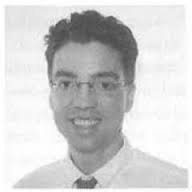In elections, younger citizens, low income citizens, and various racial and ethnic minorities, are very much underrepresented among those who vote. It would be more democratic if all portions of the public had a say proportionate to their number.
The media can tilt the scales in favor of some election candidates and against others, for example, by the amount of coverage they provide. The scales can also be tilted by the media choices of the public. For example, viewers of Fox News may hear quite different things about candidates than those following liberal and progressive news and commentary on Facebook and Twitter.
Selecting politicians by jury
Ideally, politicians would be chosen in a way that is very democratic, well informed, and independent from moneyed interests and billionaires, with political independents being on a level playing field with party nominees, with no portion of the public being underrepresented, and with candidates not being dependent on the media to get a fair hearing. All of these things can be achieved if politicians are chosen by juries.
The President could be chosen by a presidential selection jury of perhaps 2,000 randomly sampled citizens. A random sample of this size would be large enough to be an accurate cross-section of the people. The jurors could be paid to work full-time for as many weeks as needed to make an informed choice. By being an accurate cross-section of the people engaged to take the time to make an informed choice, such a jury would provide the democratic ideal of informed rule by the people.
The procedures and rules for juries choosing politicians need to be well designed to ensure an informed choice, and a thoroughly fair and democratic process. A commission chosen by jury could be tasked with working out what is best, but play only an advisory role, with all final decisions about procedures and rules being made by jury. In this manner, all aspects of the way juries choose politicians could be decided in an informed and democratic way, independent from politicians, political parties and special interests.
Those wishing to run for President would provide written applications to the jury, and then appear before the jury to explain why they should be chosen and what they hope to achieve in office. The process could include all-candidate debates and Q & A sessions. The jurors could vote in rounds with the candidate getting the least votes in each round being eliminated until one candidate had the majority of the votes. That candidate would become the President.
Between rounds of voting the remaining candidates could appear before the jurors for further consideration, and jurors could break into small randomly chosen groups for deliberation.
(Note: You can view every article as one long page if you sign up as an Advocate Member, or higher).





